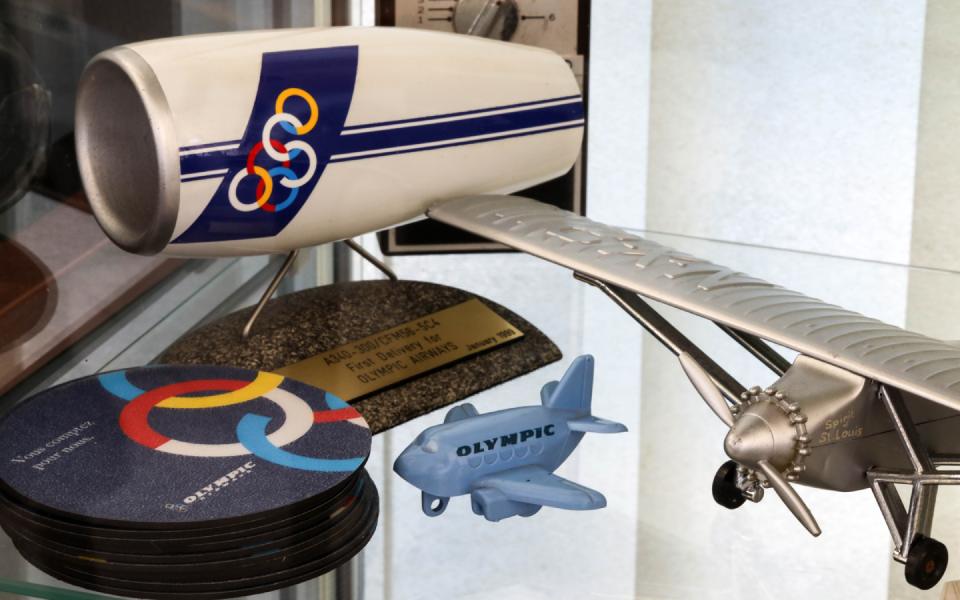The breakfast served in first class on the Olympic Airways flight from Zurich to Rome on October 26, 1967 was special, as was one of the passengers.
Ecumenical Patriarch Athenagoras was on his way to his last meeting with Pope Paul VI, continuing the historical dialogue between the Catholic and Orthodox churches that had begun in 1964.
The first class menu I’m looking at contains the names of the two religious leaders and, underneath, it says “Peacemakers.” Breakfast included fruit juice, eggs, fresh fruit, cereal, a cheese plate, croissants, jam, honey, coffee and tea.
The powerful owner of Olympic Airlines, Aristotle Onassis, wanted to take good care of his VIP passengers, say Vassilis Tsatsarangos and Antonis Bartzas, members of the Olympic Airways Employees’ Cultural Center (POLKEOA), as they show me black-and-white photos of the interior of the cabin where the patriarch was seated for the flight. The decorative touches on the “holy” flight included candles and icons.
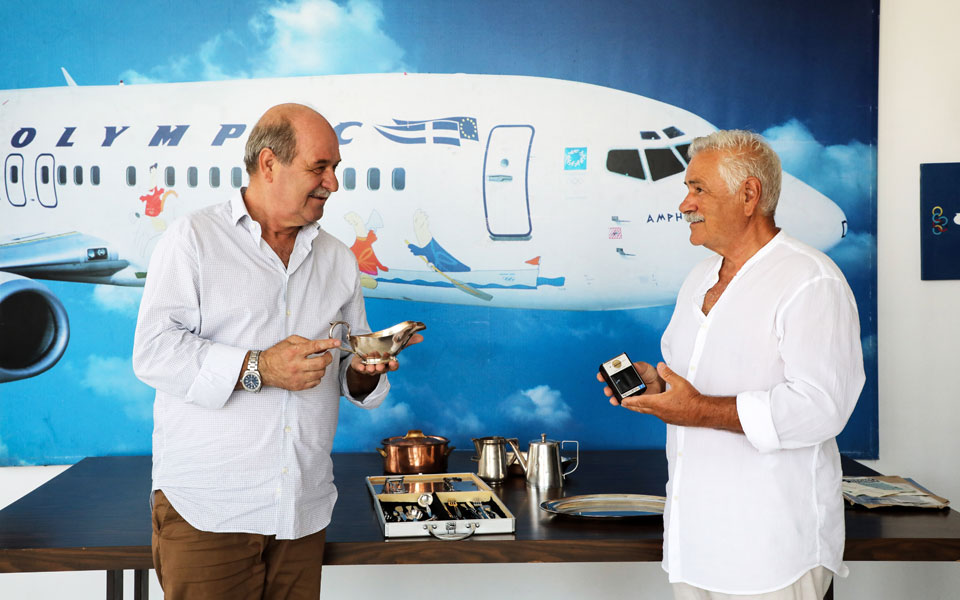
© Nikos Kokkalias

© Nikos Kokkalias

© Nikos Kokkalias
The menu and the pictures, the gold cutlery and the silver plates are a very small sample from POLKEOA’s collection, which includes 23,000 items and documents, as well as seven planes at Athens’ former international airport at Elliniko, on the southern coast of the Greek capital.
“We have been collecting material for 23 years. When the airport shut down [in 2001], we redoubled our efforts and, in 2003, bought a small fleet of retired aircraft with money provided by our members,” says Tsatsarangos, POLKEOA’s president.
Some of the material is as old as the prewar TAE Greek National Airlines. Most of it, of course, comes from the Olympic Airways era (as TAE was renamed in 1957). The collection’s curators hope to add material from Greece’s more recent aviation history, that is from Aegean Airlines and other, smaller companies.
Their collection includes a real flight simulator on which pilots trained, as well as replacement parts, seats, company financial statements and other items.
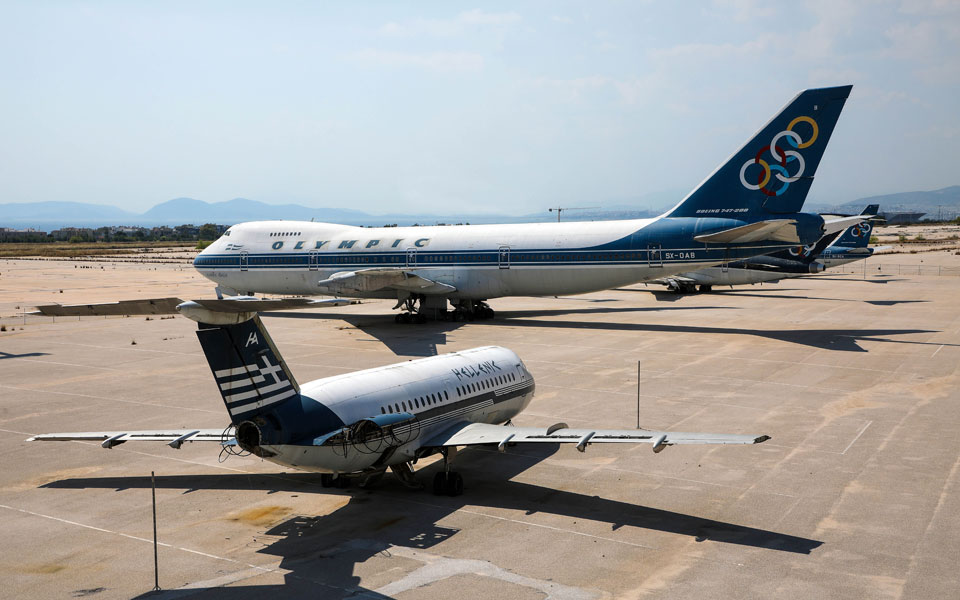
© Nikos Kokkalias

© Nikos Kokkalias
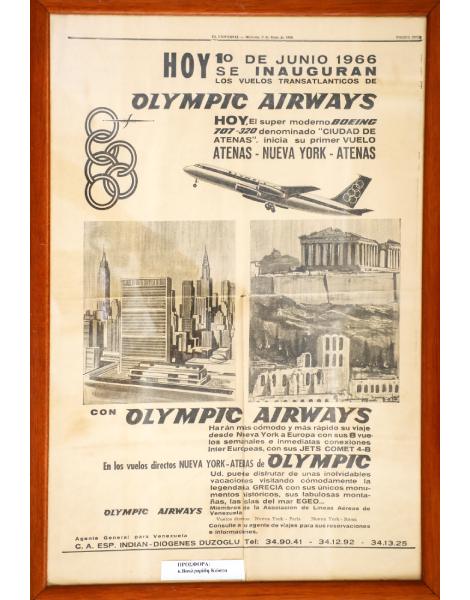
© Nikos Kokkalias
After the Civil Aviation Museum shut down in 2018 to allow the redevelopment of Elliniko to start, the collection was split into three parts and sent to three different locations.
“The materials in our possession are at risk; we have neither the finances to preserve them nor the space. Even the planes have been vandalized from time to time,” says Tsatsarangos. The Cultural Center of the former Olympic Airways employees can be found almost next to the airline’s iconic logo on Vouliagmenis Avenue.
To get to their offices, I push open a door with iron bars and walk up to the first floor of a building that’s nondescript, at least on the outside. But inside it seems time has frozen in an era when flight attendants wore chic uniforms designed by Jean Dessès, Pierre Cardin and Yannis Tseklenis.
Portraits of Aristotle Onassis and his son, Alexander, have pride of place, representing Olympic’s golden era. A big global map with the destinations the airline flew to around the world dominates Vassilis Tsatsarangos’ office, while display cases contain miniature aircraft, toys and gifts once sold at airport gift shops.
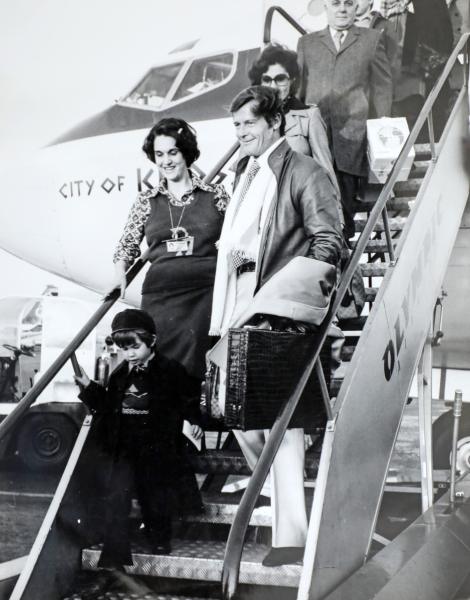
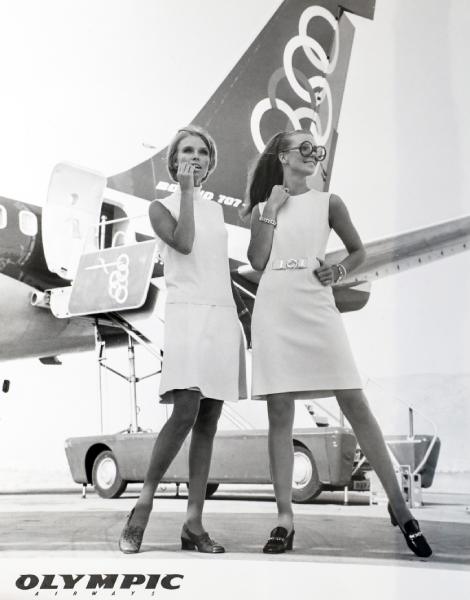
Tsatsarangos began working for Olympic in 1973, after completing his studies in aircraft engineering. At the time, Olympic was more than a company – it was a symbol of optimism and a bright future, despite the fact that air travel was still mainly for the moneyed classes.
“Back then, every 2-3 months, the fleet was added to. We were among the first companies to acquire the Boeing-747s, a marvel of technology. There was dynamic growth in the industry, and, as young kids, we saw the bright prospects,” he says.
After a lot of effort, the Civil Aviation Museum was founded in 2011 and opened at the former Western Terminal (the domestic terminal at Elliniko), with free entry to visitors. The space was vacated in 2018, but the Elliniko development plan provides for a museum dedicated to Greek civil aviation.
“We know where the museum will be located. It is the former plane factory, later the maintenance hangar, a 1938 building that has been designated a modern monument,” Tsatsarangos says.
The former airport is being demolished and the site will change form and function. While attention is focused on the investment itself, we often forget that Elliniko is the place where a great part of the history of civil aviation in Greece took place, and air travel was popularized, mainly through movies.
It’s a part of the country’s modern history that can’t be left to disappear.
This article was first published on ekathimerini.com

